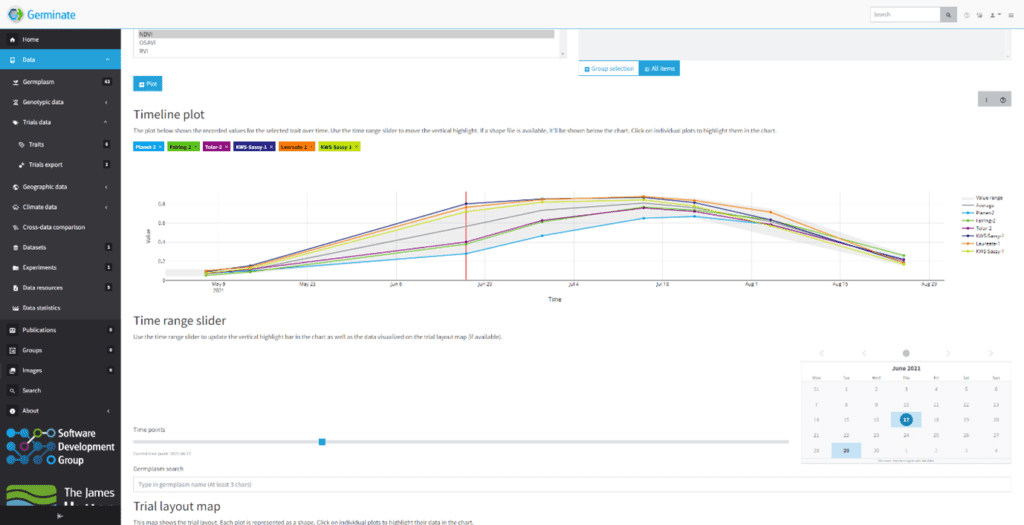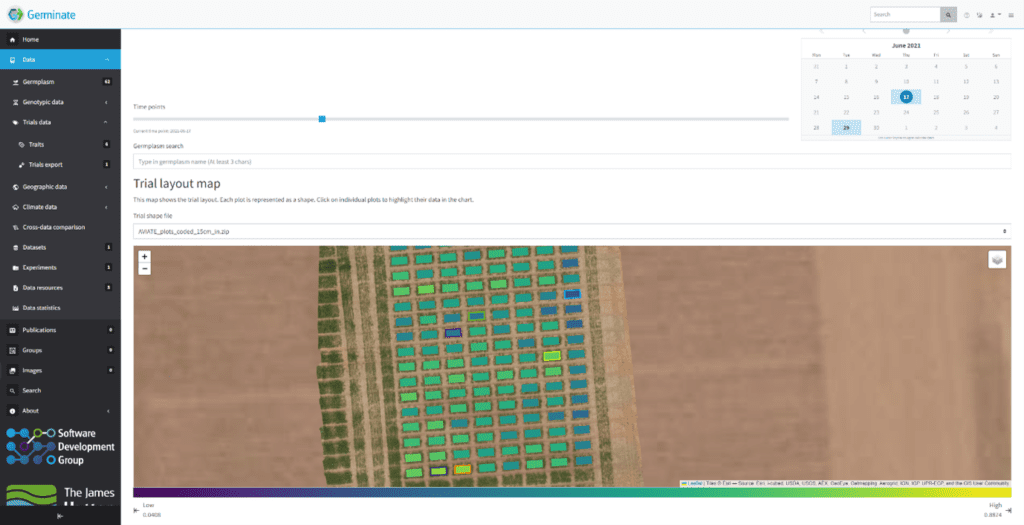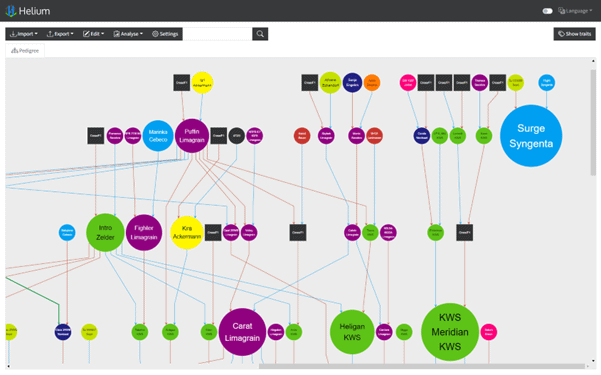Germinate Hub expands utility for visualizing breeding data through time and space
January 4, 2023Corresponding authors: Paul Shaw and Sebastian Raubach, James Hutton Institute, Dundee, Scotland.
Germinate is an open-source software platform that allows users to build, share and explore plant genetic resource databases.
The power of Germinate lies in its flexibility – offering facilities to store both standard collection information and passport data, along with more advanced data types such as phenotypic, genotypic and field trial data.
Importantly, the platform provides visualization tools that help users understand their data and to share it in standard ways with the community. Germinate offers both in-built visualizations, and the ability to export data to other visualization tools like Flapjack, Helium and CurlyWhirly.
The team behind Germinate is based at the James Hutton Institute in Dundee, Scotland. In 2022, they joined forced with DivSeek International to form the Germinate Hub, which aims to promote and extend Germinate as a common platform and focal point for the plant genetic resources community.
We spoke to the Germinate Hub co-lead, Paul Shaw, about the latest project developments and software features – and how these can meet the needs of breeders and scientists alike.
“2022 has been a busy year for us,” he says. “We have a pile of new Germinate features to play around with, and we encourage anyone who has not had a look at Germinate to try it out.”
Shaw’s team has been conducting work under the umbrella of the newly established International Barley Hub (IBH), funded by the Scottish Government/RESAS (JHI-B1-2 BARGAIN).
“As part of [this work], we have been developing tools to allow people to explore time-based trials data. In this case, it was drone imagery of barley fields, but the feature could be used for any data with a time aspect to it – and of course, any crop.”

Figure 1. Germinate’s new time series data view shows trials data across all time points. Individual germplasm can be selected to be highlight on the plot allowing direct comparison of individuals and their development over time.

Figure 2. The new map visualization added to Germinate shows the trial layout in geographic context. Trials data is visualized on top of the plots using a colour-coded heatmap. Additionally, UAV imagery is displayed in the background.
Germinate’s new time series feature allows users to share, explore and download time series data of any kind. Excitingly, they have also added a map feature, which allows users to see how specific plots within a trial compare to other plots, and view this data using several interactive visualizations.
The Information & Computational Sciences Group at James Hutton are continually adding new features to Germinate, and also develop a variety of other software applications aimed at making the plant breeding data pipeline simpler, and more beautiful.
One of these features is Helium – a platform in which various data types can be shown in a pedigree context. It allows users to integrate different datasets and visualize large pedigree structures – helping breeders and researchers to make informed decisions when selecting suitable plant lines for use in subsequent crossings.
This year, the team has complimented the desktop-based version of Helium with a web-based version. “It allows users to quickly access many familiar Helium features without having to install anything on their computers,” says Shaw.
Shaw and his team are excited to offer the DivSeek community the first chance to try out the web-based version of Helium.

Figure 3. The new web version of Helium showing an exemplar barley dataset. Circles represent germplasm and lines between them show parental relationships. Circles are coloured to show their original breeder while their size is based on the year they were introduced to the recommended list.
“We want feedback on our software from the community,” he says. “While we can’t guarantee we can meet everyone’s needs, the more feedback we have, the better chance we have of creating genuinely useful tools for the community.”
Helium, like Germinate and all other James Hutton Information Systems tools, is free to use. We encourage all Members and Observers of DivSeek to explore these tools (https://helium.hutton.ac.uk/) and pass on their comments and feedback to [email protected].
Back
Recent Comments